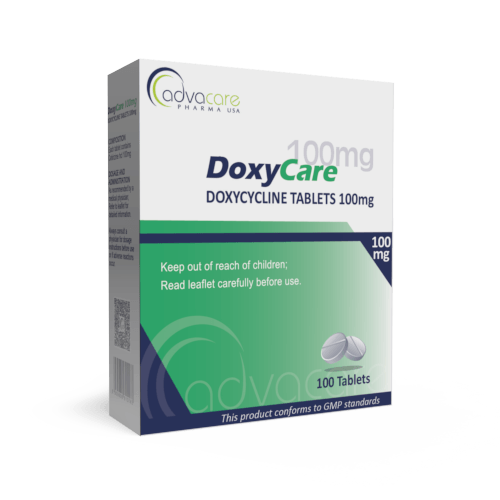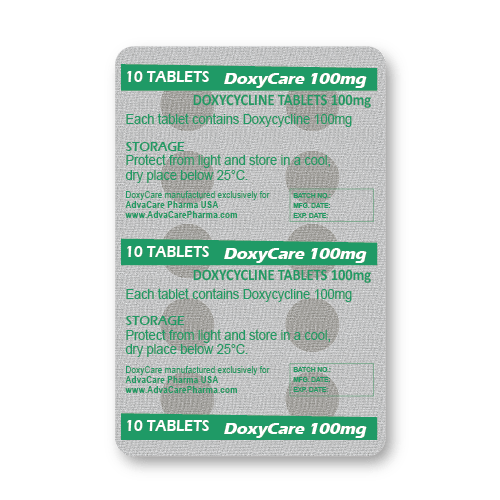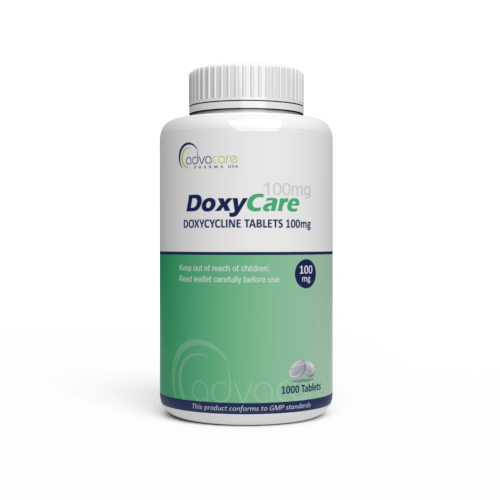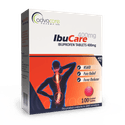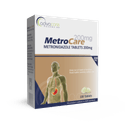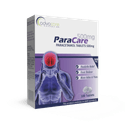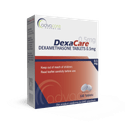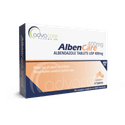- Home›
- Pharmaceuticals›
- Pharmaceutical Tablets›
- Doxycycline Tablets
Doxycycline Tablets
Dosage
Packaging
What is Doxycycline?
Active Ingredients: Doxycycline
Doxycycline Tablets are a drug used to treat many different types of bacterial infections, such as those of the skin, eyes, and respiratory system. This medication is also indicated for the treatment of acne-like lesions associated with rosacea. Doxycycline may also be used for malaria prevention.
Doxycycline Tablets are indicated as a treatment for some types of zoonotic diseases, such as Plague and tularemia.
Doxycycline is classified as a tetracycline antibiotic. The active ingredient works by inhibiting the first stage of protein synthesis in the bacterial cell wall. Doxycycline is effective against many gram-positive and gram-negative bacteria.
AdvaCare Pharma is the manufacturer and exporter of Doxycycline Tablets. We routinely inspect our production facilities to ensure our products meet quality and safety standards. We offer a wide range of high-quality and cost-effective medications that are available for distribution.
Why are we a trusted Doxycycline manufacturer?
As a reputable Doxycycline manufacturer, we are dedicated to ensuring that GMP guidelines and standards strictly apply to the manufacture of our entire range of 200+ pharmaceutical treatments in tablet dosage form.
AdvaCare Pharma is an American pharmaceutical company committed to the manufacture of high-quality, affordable pharmaceuticals for a global market. The extensive international network that we partner with includes pharmaceutical distributors, hospitals, pharmacies, and a variety of other medical institutions. Our vision is to manufacture Doxycycline Tablets, and other quality-assured oral solid treatments, that get into the hands of those that need them most.
Uses
What is Doxycycline used for?
It is used to treat various types of bacterial infections, such as:
- skin infections, like acne
- respiratory infections, such as pneumonia or bronchitis
- eye infections
- infections in the lymphatic, intestinal, genital, or urinary systems
- dental infections, like periodontitis
- infections caused by ticks, lice, and mites
- plague
- tularemia
- some types of food poisoning in those who cannot tolerate penicillin
Doxycycline is also used to treat some symptoms caused by rosacea. It is also used to prevent malaria for those who are traveling to high-risk areas.
How should Doxycycline Tablets be used?
This medication is intended to be taken orally. Doxycycline Tablets should be taken with a glass of water.
What dose should be taken?
Adult Dosing Dosage may vary based on different medical indications:
- For mild to moderate bacterial infections, the usual dose is 100mg taken once per day. The starting dose should be 100mg, taken twice on the first day. The duration of treatment varies by type of infection.
- For severe bacterial infections, the usual dose is 100mg taken twice per day. The duration of treatment is dependent on the specific indication.
- For severe acne vulgaris (adjunct treatment), the usual dose is 50-100mg taken once a day. The starting dosage is 50-100mg, taken twice per day for 2-3 months.
- For community-acquired pneumonia, the usual dose is 100mg taken every 12 hours. Treatment should continue for at least 5 days. Please refer to the regional infectious disease guidelines for more specific information.
- For periodontitis, the usual dose is 20mg taken every 12 hours. This is used as adjunctive therapy following scaling and root planing, and the duration may extend up to 9 months.
- For acute bacterial sinusitis, the usual dose is 200mg per day, divided and taken every 12-24 hours. Treatment should continue for 5-7 days.
- For chlamydial infections, the usual dose is 100mg taken every 12 hours for 7 days. This is the first-line treatment. In cases of presumptive treatment (off-label), such as for sexual assault victims, the same dose and duration are recommended. Ceftriaxone and metronidazole should also be given for female patients and ceftriaxone for male patients.
- For primary, secondary, or latent syphilis of less than 1 year's duration, the usual dose is 100mg taken every 12 hours for 14 days. For latent syphilis of more than 1 year's duration or with an unknown duration, the dose is 100mg PO every 12 hours for 28 days. This is not a first-line therapy and is intended for patients with hypersensitivity to PCN.
- For lymphogranuloma venereum (first-line therapy), the usual dose is 100mg taken every 12 hours for 21 days. In cases where the disease is asymptomatic, a shorter course of 7 days may be considered.
- For non-gonococcal urethritis (first-line therapy), the usual dose is 100mg taken every 12 hours for 7 days. This medication is considered a first-line treatment for this condition.
- For epididymitis, the usual dose is 100mg taken every 12 hours for 10 days. It is advisable to use it in combination with ceftriaxone.
- For proctitis, the usual dose is 100mg taken every 12 hours for 7 days. This should be given in combination with ceftriaxone. If there is a positive rectal chlamydia test along with symptoms such as bloody discharge, perianal or mucosal ulcers, or tenesmus, the duration of treatment should be extended to 21 days.
- For cutaneous anthrax, the usual dose is 100mg taken every 12 hours for 7-10 days. This is the first-line treatment for non-systemic infections. In cases where bioterrorism is suspected, an extended duration may be required. This treatment may also be used in pregnant women.
- For post-exposure prophylaxis against anthrax, the usual dose is 100mg taken every 12 hours for 60 days. This is the first-line agent for post-exposure prophylaxis and is typically administered in combination with anthrax vaccine. It may also be used in pregnant women. In immunocompetent patients aged 18-65 years who have completed the anthrax vaccine regimen, it can be given for 42 days or for 14 days after the last vaccine dose.
- To prevent malaria, the usual dose is 100mg taken once a day. Treatment should begin 1-2 days before potential exposure and continue for 4 weeks after leaving the malaria-endemic area.
Pediatric Dosing Recommended dosage for children may vary based on different medical conditions:
- For mild to moderate bacterial infections in children older than 8 years, the usual dose is 2.2mg/kg per dose taken once a day. The starting dose should be 2.2mg/kg per dose taken twice on the first day. The maximum dosage is 100mg per dose. The duration of treatment may vary depending on the specific indication.
- For severe bacterial infections in children older than 8 years, the usual dose is 2.2mg/kg per dose taken twice a day. The maximum dose is 100mg per dose. The duration of treatment may vary based on the indication.
- For severe acne vulgaris (adjunct therapy) in children older than 8 years, the usual dose is 50-100mg taken once a day. The starting dose should be 50-100mg taken twice a day for 2-3 months. The maximum dosage is 100mg per dose.
- For atypical community-acquired pneumonia in children older than 8 years, the recommended dose is 2.2-4.4mg/kg per day. The dose should be divided and taken every 12 hours. Treatment should continue for 7-10 days.
- For chlamydial infections (first-line therapy) in children 8 years and older, the usual dose is 100mg taken every 12 hours for 7 days.
- For non-gonococcal urethritis (first-line therapy) in preadolescents with a body weight of over 45kg and adolescents, the usual dose is 100mg taken every 12 hours for 7 days.
- For epididymitis in preadolescents with a body weight of over 45kg and adolescents, the usual dose is 100mg taken every 12 hours for 10 days. It is advisable to use it in combination with ceftriaxone.
- For proctitis in preadolescents with a body weight of over 45kg and adolescents, the usual dose is 100mg taken every 12 hours for 7 days. This should be given in combination with ceftriaxone. If there is a positive rectal chlamydia test along with symptoms such as bloody discharge, perianal or mucosal ulcers, or tenesmus, the duration of treatment should be extended to 21 days.
- For cutaneous anthrax not involving systemic infection, the usual dose is 2.2mg/kg per dose taken every 12 hours for 7-10 days. The maximum dosage is 100mg per dose. If bioterrorism is suspected, the treatment duration should be extended to a total of 60 days.
- For post-exposure prophylaxis of anthrax (first-line therapy), the usual dose is 2.2mg/kg per dose taken every 12 hours for 60 days. The maximum dosage is 100mg per dose.
- To prevent malaria in children older than 8 years, the usual dose is 2.2mg/kg per dose taken once a day. This treatment should start 1-2 days before potential exposure. The maximum dosage is 100mg per day. Discontinue treatment 4 weeks after potential exposure.
- For Rocky Mountain spotted fever, the usual dose is 2.2mg/kg per dose, taken every 12 hours for 5-14 days. The maximum dosage is 100mg per dose.
Refer to a doctor or pharmacist for more specific guidelines on dosage. Do not exceed what they advise.
Who can use Doxycycline Tablets?
Doxycycline Tablets can be given to adults and children, but caution is advised for specific groups of patients.
Pregnant Doxycycline is recommended for the treatment of anthrax infection in pregnant women, and it should be used cautiously for the treatment of malaria. For other indications, the use of Doxycycline should be avoided.
Breastfeeding For short-term treatment, this drug can be used if the benefits outweigh the risks. It is recommended to avoid breastfeeding if the treatment has extended past 3 weeks.
Children The use of doxycycline in children under 8 years old may result in permanent yellow staining of teeth. The benefits of treatment must be weighed against the risks when prescribing to this population.
Geriatric Studies have not indicated problems specific to elderly patients. It is important to note that this population is more likely to suffer from hepatic, renal, or cardiac problems, and dose adjustments may be necessary.
Side Effects
As with all pharmaceuticals, some unwanted effects can occur from the use of Doxycycline Tablets.
Common side effects include, but may not be limited to:
- diarrhea, nausea and vomiting
- loss of appetite
- dizziness
- headache
- skin sensitivity to the sun
Seek urgent medical attention if the following develop:
- allergic reaction
- severe or bloody diarrhea
- stomach pain or cramps
- fever
- dehydration
- weight loss
- severe headache
- blurred or double vision
- vision loss
- chest pain
- anemia
For a comprehensive understanding of all potential side effects, consult a medical professional.
If any symptoms persist or worsen, or you notice any other symptoms, please call your doctor immediately.
Precautions
Do NOT use Doxycycline Tablets if:
- You are allergic to Doxycycline or any other of the ingredients.
- You have had liver or kidney disease.
- You have a sulfite allergy.
- You are pregnant or planning to become pregnant.
Before treatment, consult your doctor regarding any medications you are taking to address potential drug interactions.
This medication may not be suitable for people with certain conditions, so it is important to consult with a doctor if you have any health conditions.
References
Doxycycline in respiratory infections: a re-assessment after 17 years
This study included 40 patients with bacteriologically proven infections and the efficacy of doxycycline was examined.
Treatment with doxycycline showed 74% efficacy in patients at the end of the treatment and 64% a week later.
The conclusion of this study is that doxycycline is a safe and useful oral antibiotic and the best option for B. catarrhalis infections, especially with β-lactamase producing strains.
Doxycycline treatment of high-risk COVID-19-positive patients with comorbid pulmonary disease
SARS-CoV-2 carries significant morbidity and mortality in patients with pulmonary compromise. Antiviral drugs can be used, but the usage of doxycycline can prevent secondary infections.
Doxycycline is a good drug of choice in the treatment of COVID-19 infection, but it mainly affects the prevention of secondary bacterial infections.
You might be interested in...
Why AdvaCare Pharma?
As an industry leader, we are aware of our responsibility to provide affordable and sustainable solutions to improve healthcare worldwide.
